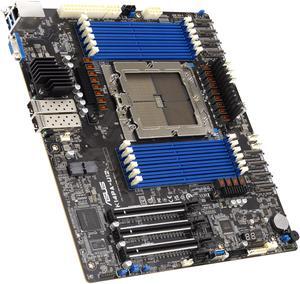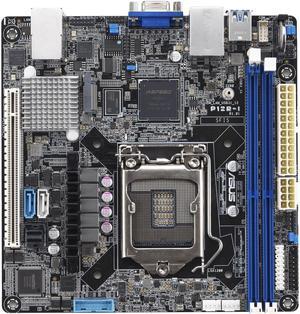- In Stock
- Sold by Newegg
- New
- Make an Offer
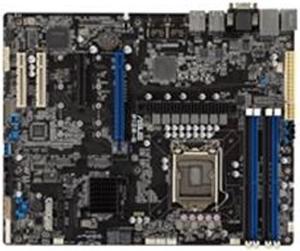
- CPU Type: Supports Intel Pentium processors, Intel Xeon E Processors
- Number of DDR4 Slots: 4 x 288-pin
- DDR4 Standard: DDR4 3200
- Maximum Memory Supported: 128GB
- Model #: P12R-E
- $395.99 –
- Free Shipping

- Model #: 90ME0640-M0UCY0
- $200.99 –
- Free Shipping

- Model #: 90ME04K0-M0UCY0
- $191.99 –
- Free Shipping
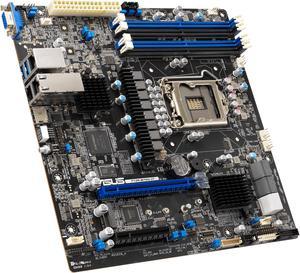
- CPU Type: Supports Intel Pentium / Xeon E processors
- Number of DDR4 Slots: 4 x 288-pin
- DDR4 Standard: DDR4 3200
- Maximum Memory Supported: 128GB
- Model #: P12R-M/10G-2T
- $407.99 –
- Free Shipping
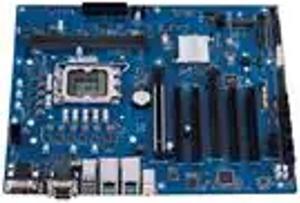
- Model #: 90ME04T0-M0UCY0
- $204.99 –
- Free Shipping

- Model #: 90ME03X0-M0UCY0
- $274.62 –
- Free Shipping

- Model #: 90ME04S0-M0UCY0
- $310.99 –
- Free Shipping
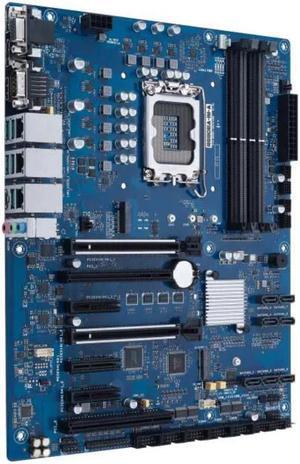
- $359.99 –
- Free Shipping

- Model #: 90ME06I0-M0UCY0
- $279.99 –
- Free Shipping

- CPU Type: Quad AMD Opteron
- System Bus: 1000 MHz
- Other Chipset: Intel 6702PXH 64-bit PCI Hub
- Number of DDR2 Slots: 16 x 240Pin
- Model #: KFN5-Q/SAS
- $399.00 –
- $45.99 Shipping
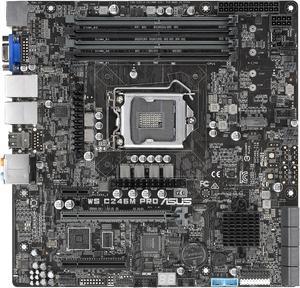
- CPU Type: Intel Xeon processor E-2100 family The 8th/9th generation Intel Core i3/Pentium/Celeron Processor Intel Core i9/i7/i5/i3 processors Intel Xeon E Processors E-2100/E-2200 * Refer to support page for more information
- Number of DDR4 Slots: 4 x 288-pin
- DDR4 Standard: Dual Channel DDR4 2666 / 2400
- Maximum Memory Supported: 128GB
- Model #: WS C246M PRO
- $397.15 –
- $10.00 Shipping
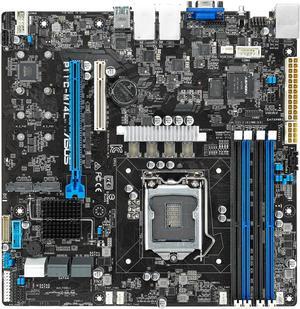
- CPU Type: Intel Xeon processor E-2100 family Intel Core i3 processors Intel Pentium processors Intel Celeron processors
- DDR4 Standard: DDR4 2666 / 2400 UDIMM non ECC and with ECC
- Maximum Memory Supported: 64GB
- PCI Express x16: Slot Location 6: PCI-E x16 (Gen3 X16 Link), Auto switch to x8 link if slot 7 is occupied
- Model #: P11C-M/4L
- $450.00 –
- $10.00 Shipping
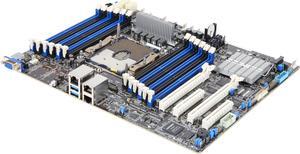
- CPU Type: Supports 1st / 2nd Gen Intel Xeon Scalable Processor Family
- DDR4 Standard: Single Channel DDR4 2666 / 2400 LR-DIMM 3DS
- PCI Express 3.0 x16: Slot Location 2 : PCI-E x16 (Gen3 X16 Link) Slot Location 4 : PCI-E x16 (Gen3 X16 Link), Auto switch to x8 link if slot 3 is occupied
- PCI Express x8: Slot Location 1 : PCI-E x8 (Gen3 X4 Link) Slot Location 3 : PCI-E x8 (Gen3 X8 Link)
- Model #: Z11PA-U12
- $1,038.70 –
- Free Shipping

- CPU Type: Intel Xeon processor E3-1200 v3 product family 4th Gen Intel Core i3 processors Intel Pentium processors Intel Celeron processors
- Number of DDR3 Slots: 4 x 240pin
- Maximum Memory Supported: 32GB
- Channel Supported: Dual Channel
- Model #: P9D-C/4L
- $119.99 –
- Free Shipping
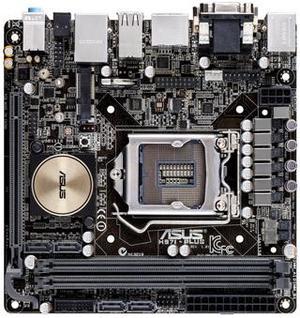
- Model #: H97I-PLUS 1
- $169.99 –
- Special Shipping
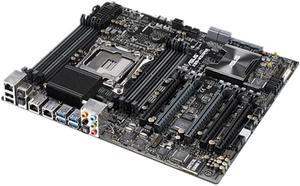
- Number of Memory Slots: 8
- PCI Express x16: 5 x PCI Express x16
- Max LAN Speed: Yes
- CPU Type: Core i7 Xeon
- Model #: X99-WS IPMI
- $229.98 –
- $10.00 Shipping
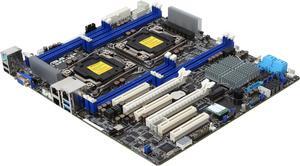
- CPU Type: Intel Xeon processor E5-2600 v4 product family Intel Xeon processor E5-2600 v3 product family
- QPI: Up to 6.4 / 8.0 / 9.6 GT/s
- Other Chipset: Intel C612 PCH
- Number of DDR4 Slots: 8
- Model #: Z10PA-D8
- $283.99 –
- $49.99 Shipping
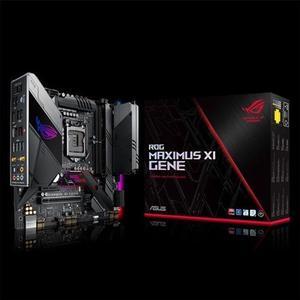
- Model #: ROG MAXIMUS XI GENE
- $244.98 –
- $10.00 Shipping
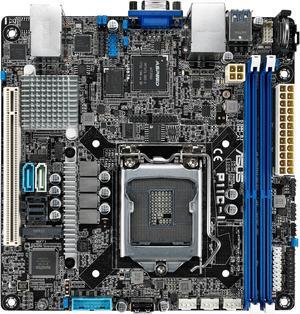
- CPU Type: Intel Xeon processor E-2100 family Intel Core i3 processors Intel Pentium processors Intel Celeron processors
- DDR4 Standard: DDR4 2666 / 2400 UDIMM non ECC and with ECC
- Maximum Memory Supported: 64GB
- PCI Express x16: Slot Location 7: PCI-E x16 (Gen3 X16 Link)
- Model #: P11C-I
- $299.99 –
- $10.00 Shipping
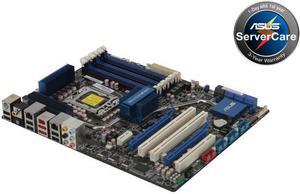
- CPU Type: Intel Socket 1366 Core i7 Extreme Edition/Core i7 Processors Intel Xeon W5500/3600/3500 Series Intel Xeon X5600/5500 Series Intel Xeon E5600/5500 Series Intel Xeon L5600/5500 Series
- South Bridge: Intel ICH10R
- Number of DDR3 Slots: 6 x 240pin
- Maximum Memory Supported: 24GB
- Model #: P6T WS PRO
- $138.98 –
- $10.00 Shipping
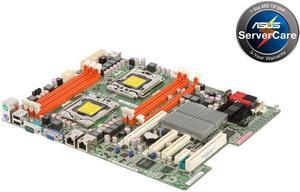
- CPU Type: Dual Intel Xeon 5500/5600 Series
- QPI: 4.8 / 5.86 / 6.4 GT/s
- South Bridge: Intel ICH10R
- Number of DDR3 Slots: 6 x 240pin
- Model #: Z8NA-D6C
- $95.99 –
- $10.00 Shipping
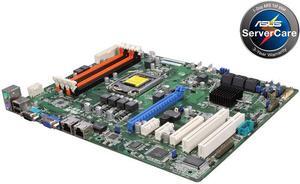
- CPU Type: Intel Xeon E3-1200 / Core i3-2100 / Core G8X0 / Core G6X0 Family Processor
- Number of DDR3 Slots: 4 x 240pin
- Maximum Memory Supported: 32GB UDIMM
- Channel Supported: Dual Channel
- Model #: P8B-X
- $74.99 –
- $10.00 Shipping
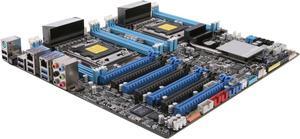
- Memory Standard: DDR3 2133(O.C.)/2000(O.C.)/1866(O.C.)/ 1600/1333/1066
- Number of Memory Slots: 8x240pin
- Audio Chipset: Realtek ALC898
- PCI Express 3.0 x16: 4 x PCIe 3.0/2.0 x16 (dual x16 or quad x8) 2 x PCIe 3.0/2.0 x16 1 x PCIe 3.0/2.0 x16 (x8 mode)
- Model #: Z9PE-D8 WS
- $219.99 –
- $10.00 Shipping
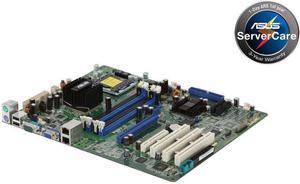
- CPU Type: Quad-Core Intel Xeon processor 3300 series (45nm) Dual-Core Intel Xeon processor 3100 series (45nm) Quad-Core Intel Xeon 3200 series Dual-Core Intel Xeon 3000 series
- System Bus: 1333/1066 MHz
- South Bridge: Intel ICH7R
- Number of DDR2 Slots: 4 x 240Pin
- Model #: P5BV-C
- $82.99 –
- $10.00 Shipping

- CPU Type: Intel Xeon W5500 Series (130W) Intel Xeon X5500 Series (95W) Intel Xeon E5500 Series (80W) Intel Xeon L5500 Series (60W/38W) Intel Six-Core Xeon 5600 Series (BIOS Version 708) Intel Quad-Core Xeon 5600 Series (BIOS Version 708)
- QPI: QPI 4.8 /5.86 /6.4 GT/s
- South Bridge: Intel ICH10R
- Number of DDR3 Slots: 18 x 240pin
- Model #: Z8PE-D18(ASMB4-IKVM)
- $126.00 –
- $10.00 Shipping

- CPU Type: Dual Intel Xeon E5-2600 series (135W)
- QPI: Up to 6.4 / 7.2 / 8.0 GT/s
- Other Chipset: Intel C602-A PCH
- Number of DDR3 Slots: 8 x 240pin
- Model #: Z9PA-D8
- $105.00 –
- $10.00 Shipping

- CPU Type: Dual AMD Opteron 4200/4100 Series
- System Bus: HyperTransport Technology 3.0
- South Bridge: AMD SP5100
- Number of DDR3 Slots: 8 x 240pin
- Model #: KCMA-D8
- $79.99 –
- $10.00 Shipping
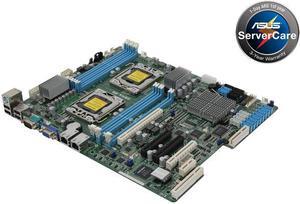
- CPU Type: Dual Intel Xeon E5-2400 product family
- QPI: Up to 8.0 GT/s
- Other Chipset: Intel C602-A PCH
- Number of DDR3 Slots: 6 x 240pin
- Model #: Z9NA-D6
- $87.99 –
- $10.00 Shipping

- CPU Type: Intel Xeon processor E5-2600 v4 product family Intel Xeon processor E5-2600 v3 product family
- QPI: Up to 6.4 / 8.0 / 9.6 GT/s
- Other Chipset: Intel C612 PCH
- Number of DDR4 Slots: 16
- Model #: Z10PE-D16/4L
- $309.00 –
- $10.00 Shipping
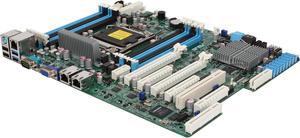
- CPU Type: Intel Xeon E5-2600/1600 series
- Other Chipset: Intel C602-A PCH
- Number of DDR3 Slots: 8 x 240pin
- Maximum Memory Supported: 256GB LRDIMM
- Model #: Z9PA-U8
- $119.00 –
- $10.00 Shipping
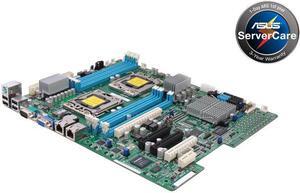
- CPU Type: Dual Intel Xeon E5-2400 series
- QPI: Up to 8.0 GT/s
- Number of DDR3 Slots: 6 x 240pin
- Maximum Memory Supported: 192GB LRDIMM
- Model #: Z9NA-D6C
- $79.99 –
- $10.00 Shipping
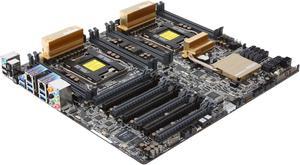
- CPU Type: Build in Intel Socket 2011-3: Square type (80 x 80mm; The maximum length of the heatsink screw thread is 3.7mm.) Processors Intel Socket 2011-v3 for Intel Xeon processor E5-1600 v4 product family Intel Socket 2011-v3 for Intel Xeon processor E5-2600 v4 product family
- Other Chipset: Intel C612 PCH
- DDR4 Standard: DDR4 1866 / 2400 / 2133 / 1600 / 1333 MHz RDIMM, LR-DIMM Memory
- Maximum Memory Supported: 512GB
- Model #: Z10PE-D8 WS
- $379.99 –
- $10.00 Shipping
Build your server or servers according to your needs using ASUS® server motherboards. They come in a range of form factors (sizes) and expansion slots. Servers differ from other computers in that they store, process, and protect a large volume of data. An ASUS server motherboard is specifically geared towards this purpose. The chipsets and socket types differ on motherboards, so when deciding on one, consider the CPU and type of Random Access Memory (RAM) you are going to install. Whether you are setting up a server at home or for your business, there are server motherboards for every purpose. Intel® processors and Intel motherboards such as Intel Xeon® server motherboards help businesses boost productivity.
Asus Server Motherboards Provide Ergonomic Business Solutions
ATX server motherboards are the second biggest motherboards, and so have more room for expansion. An ATX motherboard requires an ATX case, but will also fit into a larger eATX (Extended ATE) case. If you have a small case, go with an mATX or micro ATX server motherboard, or choose the mini server motherboard. These smaller motherboards can fit into a bigger case easily. There is also an ITX server motherboard that correlates to Intel systems. Save space and keep your servers safe with motherboards that are suitable for rackmount servers. These servers are wider and flatter than standard computer towers. They are a suitable choice for bigger businesses that need multiple servers to run daily operations efficiently. Blade servers have the same benefits, in that they slot vertically instead of horizontally, and connected via one fiber optic cable. It makes blade servers a popular choice for big corporations in need of more than ten servers.
Look for Fast Data Processing
The (CPU) Central Processing Unit is essential for processing your data, in addition to how much RAM you have. AMD processors only work with AMD motherboards like the AMD Ryzen Ripper motherboards, for example. Make sure that the memory slots are compatible with the type of RAM you want. For example, DDR3 RAM slots are only compatible with DDR 3 RAM. These motherboards come with the CPU, RAM, and VGA embedded. For further convenience, select a motherboard where the embedded CPU comes with fans for cooling.
Consider Motherboards That Protect Your Data
Server motherboards use ECC (Error Checking and Correction) to prevent data from becoming corrupted. Single bit error correction checks for malfunctions, and is a popular option for many servers. Select a motherboard with Chipkill™ technology for advanced ECC, which corrects multi-bit errors, and reconstructs memory data should the need arise. Keep the electrical load lower by choosing a motherboard with registered memory, which buffers the data coming through to reduce strain. To increase storage, get a motherboard with high-throughput expansion slots that will be compatible with HDD (Hard Drive Disk) or RAID (Redundant Array of Independent/Inexpensive Disks) controllers. Keep it simple with embedded solutions.

